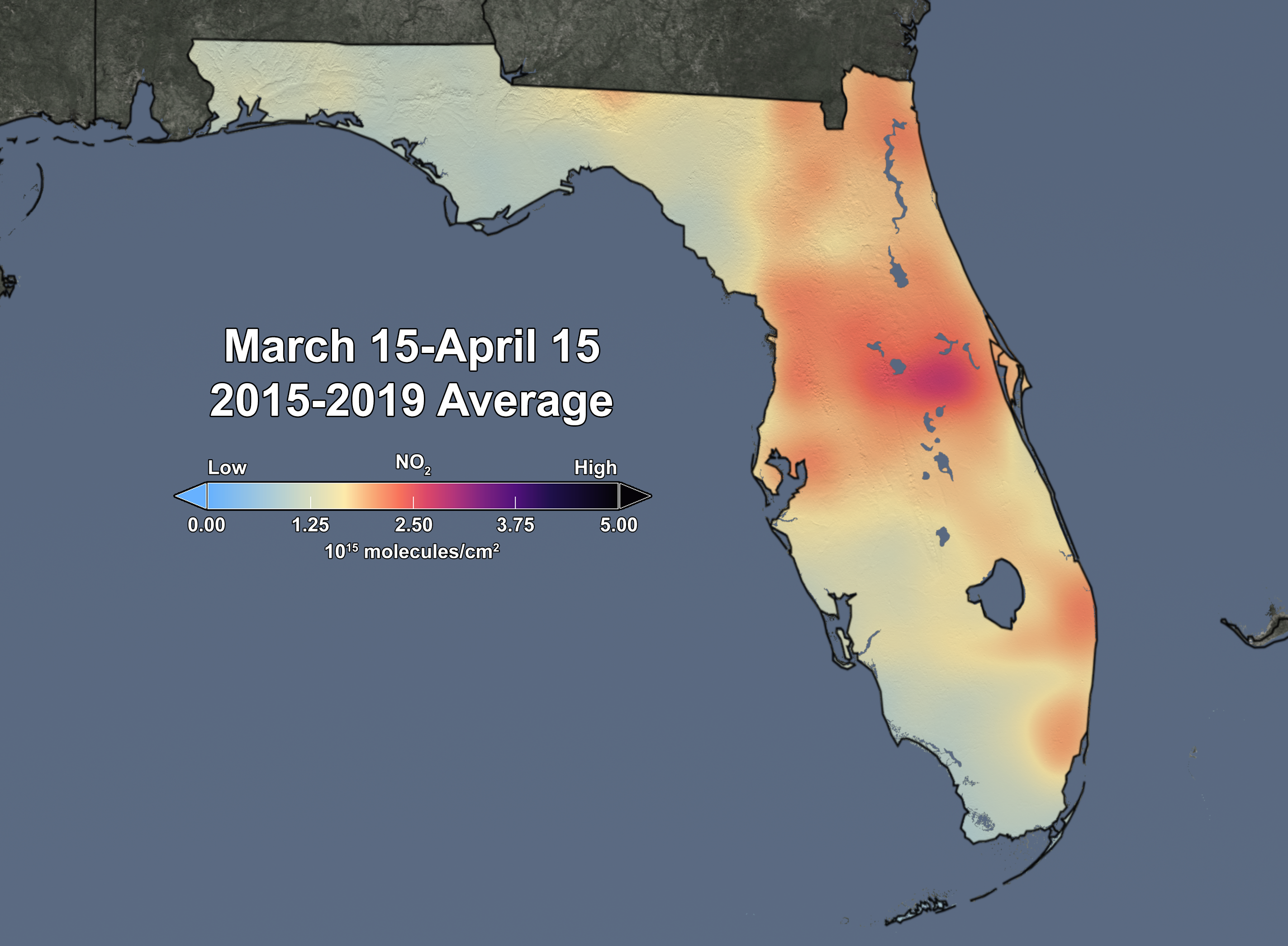

Figure caption: Over the past several weeks, Florida has seen significant reductions in air pollution over many of its major metropolitan areas, such as Miami and Orlando. Similar reductions in air pollution have been observed across the globe. These recent improvements in air quality have come at a high cost, as communities grapple with the widespread stay-at-home advisories that began about a month ago as a result of the spread of COVID-19. Major League Baseball (MLB) spring training games were canceled on March 12 and Disney World in Orlando closed on March 16. Bars and nightclubs were shuttered on March 17 by an executive order from Governor DeSantis of Florida. Many “Snowbirds”, people from the northern U.S. and Canada who spend winter in Florida, began heading back north earlier than normal. The slider above shows satellite data of NO2 from the Aura Ozone Monitoring Instrument (OMI) over Florida as an average of March 15 through April 15. The image on the left shows the mean of the period from 2015 through 2019, while the image on the right shows the mean for 2020. Though variations in weather from year to year cause variations in the monthly means for individual years, the data indicate that the NO2 levels in the last month are about 30% lower over the Florida Peninsula when compared to the mean of 2015 to 2019. In fact, March 15 – April 15 2020 shows the lowest value for the region as compared to any other year during the OMI data record, which spans 2005 to present. The NO2levels are about 30-35% lower over Orlando and Miami, while about 40% lower over Jacksonville. Caution: During much of this time period, central and south Florida experienced record setting heat and unusually low rainfall. Therefore, further analysis is required to rigorously quantify the amount of the change in NO2 levels associated with changes in pollutant emissions versus natural variations in weather. The images are free and publicly-available and may be downloaded. NEW! For scientists: Global OMI NO2 Monitor.

